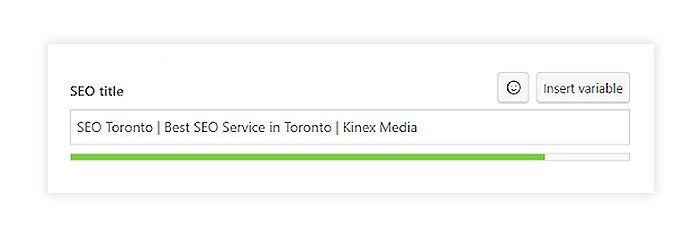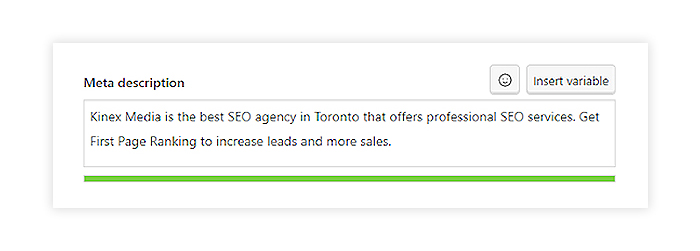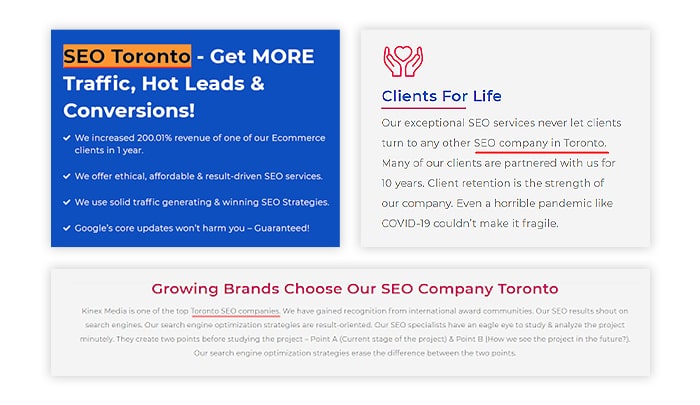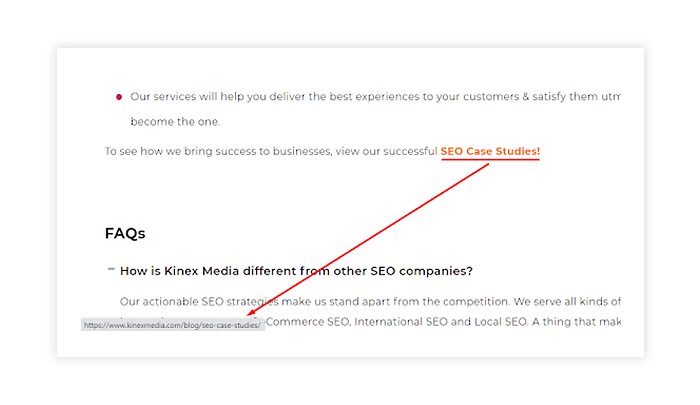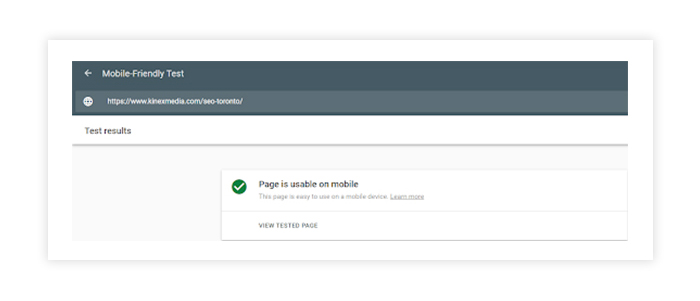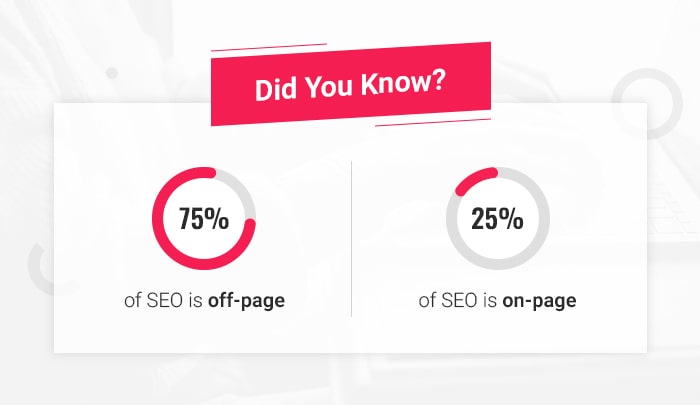Have you just started up a business and are exploring the best marketing options? I suggest you invest in an SEO which has five integral constituents – Technical Aspects ( website & server optimizations), On Page Aspects (site architecture, HTML & content elements), Off Page Aspects (guest posting, backlink creation and social listing), Content (blogs, articles, Press Releases, Newsletters etc.) and Local SEO (building NAP citations and upgrading GMB profile).
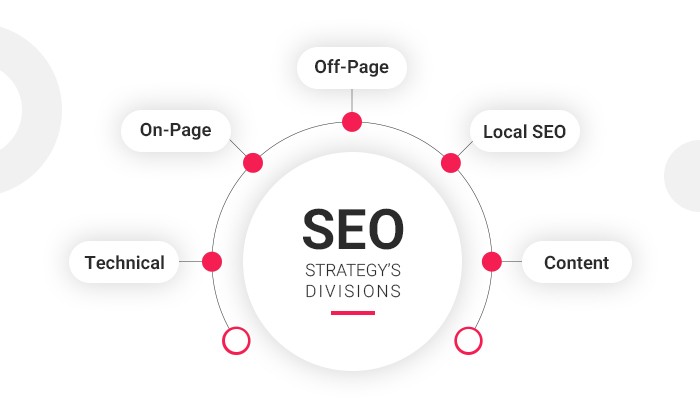
Before leveraging the efforts, an SEO strategy needs to be carefully planned. Conducting a comprehensive SEO audit provides a crystal clear idea of which SEO aspects need to be focused and which can be overlooked for some time. In other words, it assists you to set your priorities right.
For example: A website has a good amount of work done on on-page, off-page and technical aspects. But, the published content in the form of website content, blogs and articles is quintessentially poor. So, an SEO Executive can put working on those three aspects off to work on content.
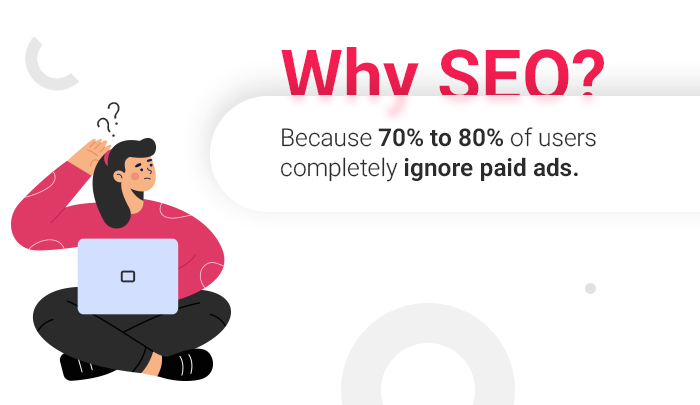
How To Strategize For SEO Campaign?
As mentioned, strategizing for SEO campaigns will help you set priorities. It’ll help you plan –
- How to work on the weaknesses of the website?
- How to make website strengths visible to Google?
- How to improve the failings of your website?
Here is the detailed guide on what Google expects from you when it comes to the constituents of SEO strategy. The checklists are prepared for you so that it is easy for you to identify the areas of strength, weaknesses and improvement.
On-Page SEO

On Page SEO primarily focuses on optimizing the elements on your website. You need to check each and every element of On-Page SEO. Here is the checklist:
- Title Tags
- Meta Descriptions
- Keyword Embedding
- Internal Links
- URLs
- Mobile Friendliness
What Google Expects From Your On-Page SEO?
Google has a predetermined guide for all the SEO elements. An SEO executive needs to follow them. You can’t afford to be “under or over” what has been already defined.
For example: Google expects a blog worth 1000 words to have a 2% keyword density. Keeping the keyword density lesser or more than the set numbers will cost you a penalty.
Title Tags
Google accepts title tags with –
- Less than 65 characters
- Accurate description of page
- Clear CTAs
- Brand or business name
- 100% originality and no-plagiarism
Meta Description
An ideal meta description has –
- Less than 160 characters
- Clear description of page
- Easily understandable language
- Casual vocabulary words
- Clear CTA
Keyword Embedding
Keywords need to be embedded –
- Naturally
- In accordance with predetermined density
- In exact match, partially match and LSI versions
Internal Links
Internal links must –
- Be relevant
- Have apt anchor text
- Be in apropos numbers
URL
An acceptable URL is –
- 50-60 characters
- Separated by hyphens
- Short & Sweet
- Descriptive
- Devoid of unnecessary information
Mobile Friendliness
A mobile responsive website usually has –
- Fast page loading speed
- Touch friendly user elements
- Clear CTA
- Mobile optimized Checkout
- Context friendly keyboard
Off-Page SEO
Off-Page SEO primarily aids in developing authority and credibility status. There are tons of ways to do so. Some people even prefer to follow the black hat tactics as they provide instant results. But instant results usually prevail for a shorter time. So, it is always suggested to take white hat or ethical SEO techniques into use.
Backlink Profile Building
Ideal practices to build backlinks are –
- Guest posting
- Profile creation
- Social Bookmarking
- Classifieds
- Forum Submission
- Infographics submission
- Quora posting
- GBP profile
- Press releases
- Article submission
- Directory submission
- Web 2.0 submission
What Google Expects From Your Off Page SEO?
To understand what Google wants from your Off Page efforts, here are some Do’s & Don’ts –
Guest Posting/Article Submission
DO’s |
DON’Ts |
|---|---|
| Target high authority sites | Don’t publish on low quality sites |
| Embed rich anchor text links | Don’t use anchor texts like – Read More, Know More |
| Provide high quality content | Don’t provide guest posting sites scraped, duplicate, spinned or AI written content |
| Choose sites which cater to the needs of your targeted audience as well. | Don’t merely choose sites based on the overall traffic |

Don’t consider guest posting as an opportunity to gain backlinks. Besides that, it can help you to drive relevant traffic to your website.
Profile Creation
DO’s |
DON’Ts |
|---|---|
| Post genuine information about the author or company | Don’t build profiles on spammy sites. |
Business Listing
DO’s |
DON’Ts |
|---|---|
| Use exact name of business | Don’t choose spammy sites for business listings |
Bookmarking
DO’s |
DON’Ts |
|---|---|
| Use unique content on various bookmarking websites. | Don’t use duplicate content. |
| Choose websites wisely | Don’t choose spammy websites |
Classifieds
DO’s |
DON’Ts |
|---|---|
| Give relevant and descriptive information about the products and services. | Don’t use irrelevant images and avoid considering spammy websites. |
To explain this in a better way ‘Don’t use irrelevant images and avoid considering spammy websites’ here is the illustration –
For example: Since weed consumption in specified quantities for medicinal purposes is legal in Canada, businessmen are allowed to deal in it. Here you can use the informative images that can guide the benefits of consuming weeds to combat various adverse health conditions. On the other hand if you show the images where a person is smoking weed, it will guide the audience to do something negative out of it. So, it is suggested to be wise when it comes to choosing images.
Additional Information –
There are some sites which allow the national websites to build backlinks. So you have to be careful while dealing with them. Always remember ‘Quality is preferable over quantity’.
Forum Submission/Quora Posting
DO’s |
DON’Ts |
|---|---|
| Post relevant questions and answers | Don’t post anything for the sake of obtaining backlinks |
| Embed link with your question or answer if it adds value to what you are trying deliver | Don’t add link forcefully |
Infographic Submission
DO’s |
DON’Ts |
|---|---|
| The infographic needs to be highly informative | Don’t add even a single shade of promotion |
| Choose relevant and high authority sites for infographic submission | Don’t ever go with low quality, low DA and spammy websites |
GBP Profile
DO’s |
DON’Ts |
|---|---|
| The GBP profile must have complete information (including: location, business hours and products and services you offer) | Never post promotional images on GMB. The images which have mentioned the website or any other contact details will be considered as promotional |
| Keep updating your GBP profile with any change happening in your business Consider replying to all reviews – Positive or Negative |
Never let the orthodox information reach your audience. |
Press Releases
DO’s |
DON’Ts |
|---|---|
| Let the audience know about the significant events happening in your business or company. | Never add promotional content in press release |
| To illustrate – Recently, our SEO Toronto company got enlisted in The Globe and Mail’s Business Ranking and obtained the title of ‘Canada’s fastest growing company’. Since it was a significant event for our company, we published its press release on various news sites. |
Web 2.0 Submission
DO’s |
DON’Ts |
|---|---|
| Regularly update your content and theme. | Don’t use thin content Don’t use these sites for the sake of obtaining links. |

Blog commenting was once considered as a means to build backlinks and drive traffic to a website. Because of the misuse of this tactic that prevailed for a significant period of time, Google decided to enlist it among ‘Black Hat SEO’ tactics.
Social Media Engagement
Powerful ways to drive social media engagement:
- Informative post creation
- Trending reel creation
- Quiz
- Regular story posting
- Inviting individual perspectives
- Organizing giveaway contests
- Generating short & sweet captions
- Incorporating relevant hashtags
- Relevant tagging
- Giving credits

Some apps are popular in specific countries. With a careful analysis, you can exploit this means to reach a massive proportion of targeted audience.
- Regular posting
- Keep up with trend
For example: In Canada, these social media platforms are popular and encounters huge traffic – Facebook, Pinterest, Twitter and Instagram as stated by Statista
Local SEO

Nowadays, a trend is heating up – “Local SEO”. The predominant reason behind it is the changing preferences and interests of people. In today’s day and age, people consider it more useful to buy products or hire services offered by the local business. Because of it, the popularity of keywords such as -’xyz near me’, ‘xyz nearby’ is growing.
But, the importance of local SEO is usually overlooked. Businesses are not taking the maximum advantages from local SEO. They are failing to recognize its worth. Having a fleeting glance at the statistics make it abundantly clear that local SEO can drive big chunks of targeted audience (which is more likely to convert into potential and repeated buyers). Besides, the revenue generated through local SEO exceeds the rate of revenue generation from broad region targeting strategy.
For example: You live in Toronto, Canada. You are more likely to search for the products or services by suffixing it with the term ‘in Toronto’. Like, you are looking for a pizza store. So you’ll search for it like this – Pizza store near me.
Would you search it like this – Pizza store in Canada?
No!
Because, you know, if you search it like that, results from across Canada will appear. Then, it’ll be difficult for you to filter out the results. From that perspective, it will not be wrong to consider local SEO as a filtration facility. Google is saving your time that you would have otherwise spent on filtering results to match your area.
What Google Expects From Your Local SEO Efforts?
- Collect Customer Reviews
- Build NAP citations
- Social listening
- Local listings
Collect Customer Reviews
- Generate special barcodes to redirect customers to feedback pages
- Verbally request the customers to submit their feedback on Google
- Send feedback-requesting emails or messages
Build NAP citations
- Always offer comprehensive information (including – Name, Address, Phone Numbers)
- In case of any change in the NAP, immediately update it
Local listing
Consider using –
- Yellow pages
- Local websites
By now, you have a comprehensive list of the elements that you need to assess during a site audit. Open a doc file and create a table with three columns. In the first column mention all the elements. Second column is supposed to have ticks and crosses or you can write Done or Pending. The elements which are on-point, use ‘Done’ and for those which needs to be worked on, comment ‘Pending’. Third column should record the status of whether you’re working on it and how long the particular element takes to get rectified.
Finally, A Wrap!
A carefully planned SEO strategy is essential for any new project to gain online visibility. Conducting a comprehensive SEO audit and identifying the areas of strength, weaknesses, and improvement can help prioritize efforts. Google has predetermined guidelines for On-Page and Off-Page SEO elements, and following them is crucial to avoid penalties. Guest posting, backlink creation, social bookmarking, and business listings are some ideal practices to build a robust backlink profile. Ethical SEO techniques must be adopted over black hat tactics to develop authority and credibility status. By following the Do’s and Don’ts of each element, businesses can build a successful SEO campaign and drive relevant traffic to their website.


